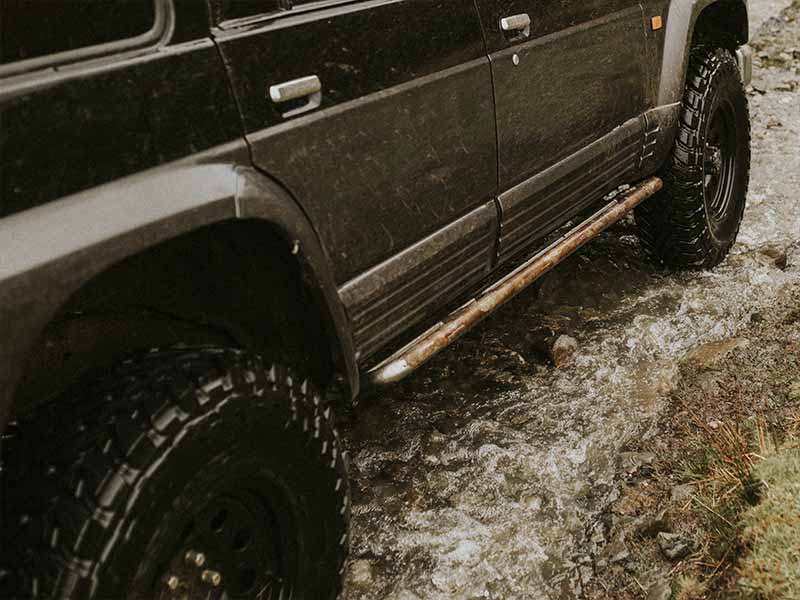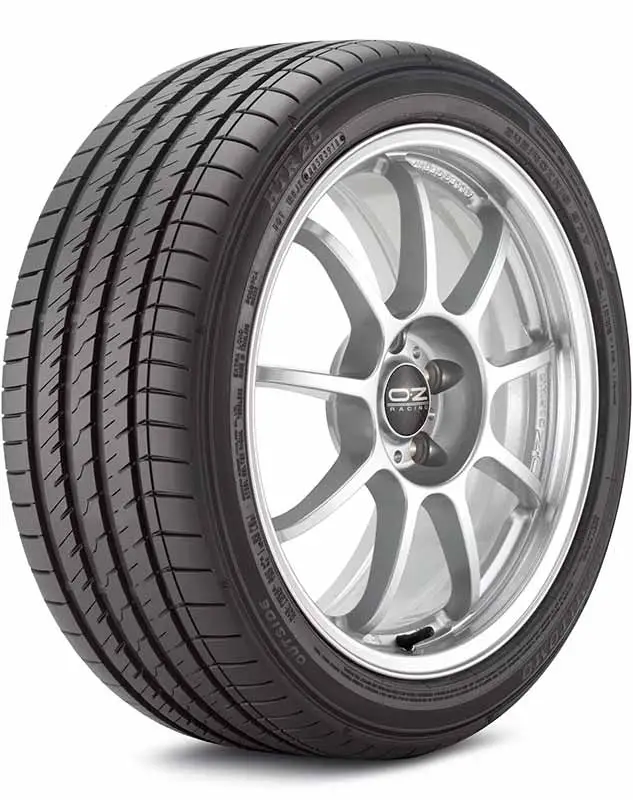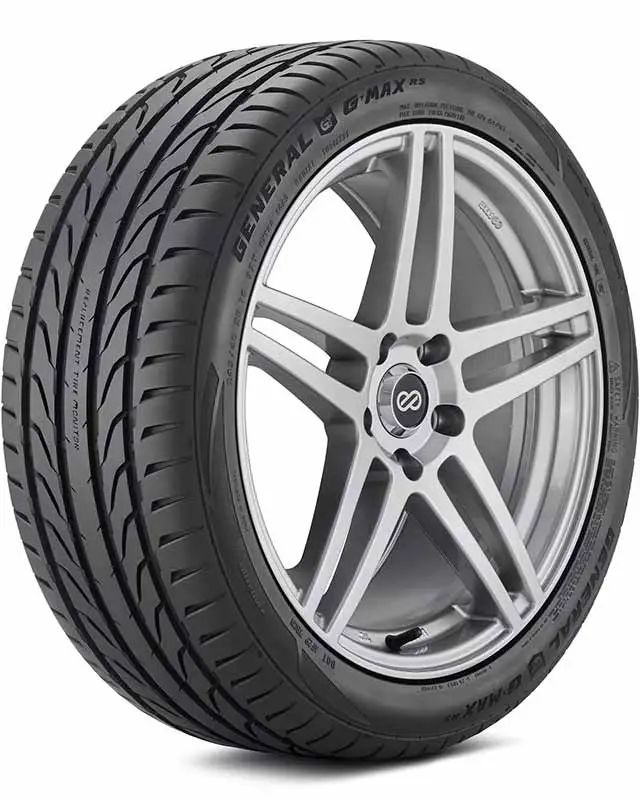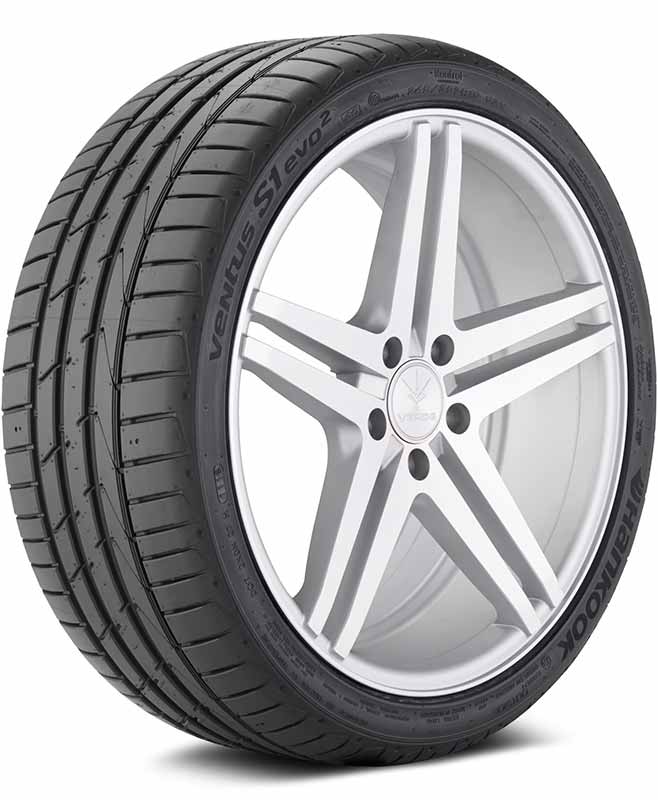Setting out on an off road adventure or a casual city cruise, the tires you choose – Mud Terrain (MT) or All Terrain (AT) – play a crucial role in shaping your journey. Understanding their differences is key to ensuring a safe and smooth driving experience tailored to your adventures and everyday commutes.
MT Vs AT Tires
MT tires are specifically designed for off-road enthusiasts, providing optimal performance in challenging terrains like mud and rocks, albeit with a noisier and less fuel-efficient ride on paved roads. In contrast, AT tires offer a versatile solution, ensuring a quieter and more fuel-efficient ride on streets while still being capable of handling light off-road conditions.
In this article, we explore the nuances of MT and AT tires, dissecting their design, daily performance, and ideal applications to guide you in choosing the right tires, ensuring your vehicle is equipped for both adventures and routine drives.
Let’s take a closer look.
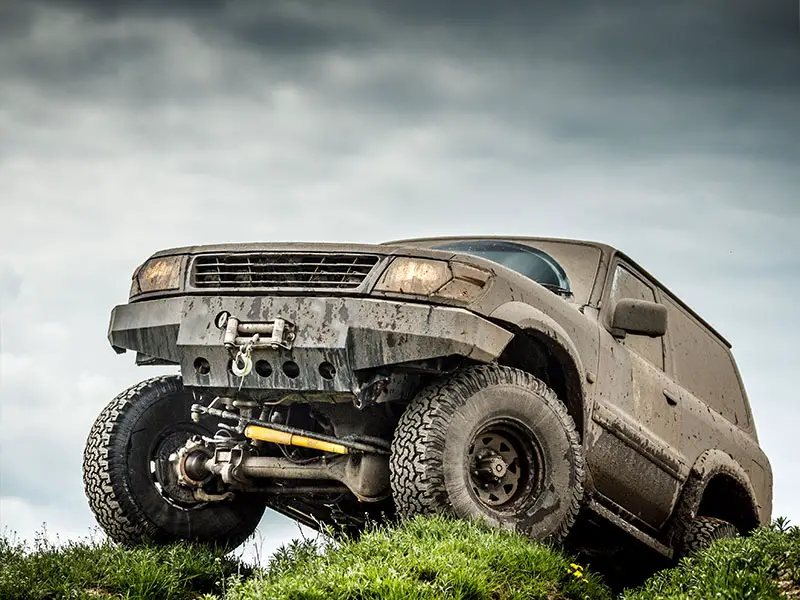
Understanding MT and AT Tires
What are MT Tires?
MT tires, or Mud Terrain tires, are like the big, strong boots of the tire world. They’re made to handle messy, muddy, and rough paths where regular tires might struggle. Imagine walking in a muddy field with sneakers; it would be slippery and tricky, right? MT tires are like having hiking boots for such a situation but for your car or truck.
- Built Tough: MT tires are built tough to handle rocks, mud, and other hard stuff.
- Deep Treads: They have deep grooves, which help them grip onto the uneven and slippery surfaces.
- Loud on Roads: When you drive on regular roads, they can be quite noisy.
- Not So Friendly for Fuel: They can make your vehicle use more gas.
What are AT Tires?
On the other side, we have AT, or All Terrain tires. Think of these as the sneakers of the tire world. They’re not as rugged as MT tires, but they’re great for a mix of everyday driving and some off-road adventures. They’re like having a good pair of running shoes that you can also use for a bit of light hiking.
- Versatile: AT tires can handle both regular roads and some off-road conditions pretty well.
- Quieter Ride: They’re not as loud as MT tires when you’re driving on highways.
- Friendlier for Daily Use: They won’t make your vehicle use as much gas as MT tires.
- Moderate Treads: They have treads that are not as deep as MT tires, but still offer a good grip.
Comparing MT and AT Tires
Where MT Tires Shine:
- Rocky Roads: They’re great for rocky paths because they’re tough and won’t easily get damaged.
- Muddy Paths: Those deep treads are perfect for squishing through the mud without getting stuck.
Where AT Tires Shine:
- Everyday Driving: Going to the store or school? AT tires are quiet and smooth.
- Light Off-Roading: A bit of dirt or gravel path? AT tires can handle that.

Everyday Use and Performance
Noise Level on the Road
MT Tires: The Rumbly Ones
MT tires can be quite the talkative companions on your drives, especially on smooth roads. Those big, deep treads that are so useful in the mud create a rumbling sound when they roll on the pavement. It’s not a big deal when you’re off-road, but in the city or on the highway, you might notice the hum.
- Why So Loud?: The big blocks of rubber on MT tires smack against the road, creating a drum-like noise.
- Where You’ll Notice: Especially on smooth highways, MT tires might sing you the song of their people.
AT Tires: The Quieter Buddies
AT tires, on the other hand, know how to keep it down a bit. They’re not whisper-quiet, but they won’t chat your ear off during a peaceful drive.
- Why Quieter?: Their treads are not as big and chunky, so they don’t slap against the road like MT tires.
- Where You’ll Notice: On most city roads and highways, AT tires keep the noise to a low hum.
Fuel Efficiency: Miles and Miles
MT Tires: Thirsty Travelers
MT tires like to sip a bit more fuel than their AT cousins. Their big, aggressive treads have more rolling resistance, which means your vehicle has to work harder and use more gas.
- More Work: Your vehicle works extra to push those big treads along, especially on regular roads.
- More Stops: You might find yourself visiting the gas station a bit more often with MT tires.
AT Tires: Sipping Slowly
AT tires are a bit more mindful of how much they drink. They’re designed to give you a smoother ride without asking for extra fuel.
- Less Work: Your vehicle doesn’t have to work as hard to keep AT tires rolling.
- Fewer Stops: You might pass by a few more gas stations before needing to stop with AT tires.
Treadwear and Lifespan: How Long Will They Last?
MT Tires: Tough but Worn
MT tires are built tough for rough terrains, but that doesn’t always mean they last longer. On regular roads, those big treads can wear down quicker.
- Tough Terrains: They resist damage from rocks and sticks off-road.
- Quicker Wear: On paved roads, the aggressive treads can wear down faster than you might think.
AT Tires: Steady Companions
AT tires might not be the warriors that MT tires are off-road, but they tend to wear more evenly and last a bit longer on regular roads.
- Gentle Wear: They usually wear down more evenly and slowly than MT tires.
- Longer Lifespan: With proper care, AT tires can be your buddies for quite a few road trips.
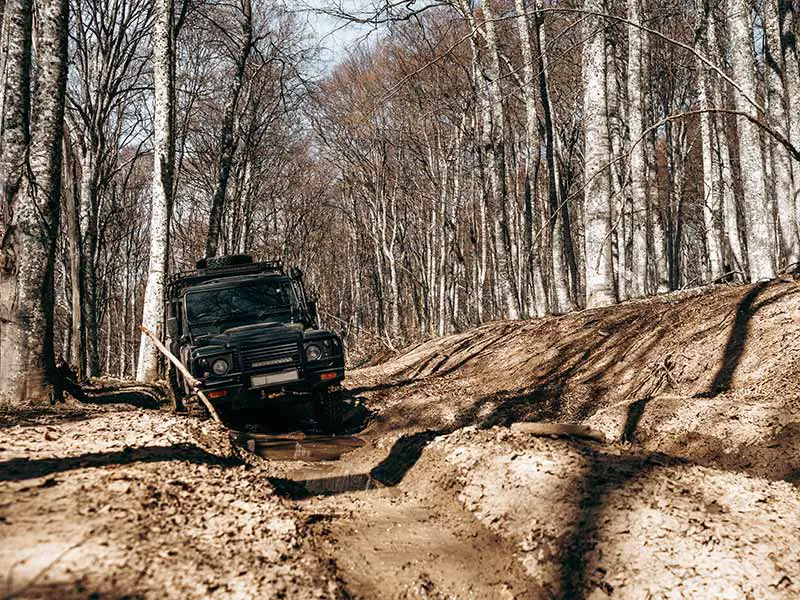
Ideal Use Cases and Performance
Off-Road Performance: Getting Muddy and Rocky
MT Tires: The Off-Road Champions
MT tires are like the superheroes of messy, tricky paths. They dive into the mud and climb over rocks without a second thought.
- Mud Masters: Those deep treads we talked about? They grab onto the mud and help pull your vehicle through.
- Rock Climbers: MT tires are tough. They can handle sharp rocks without tearing.
AT Tires: The Off-Road Adventurers
AT tires might not be superheroes, but they’re definitely brave adventurers. They can handle a bit of mud and some rocky paths, just not as aggressively as MT tires.
- Mud Explorers: They can explore muddy paths, but might struggle in the deep, sticky stuff.
- Rock Hoppers: They can handle some rocks, but prefer smaller ones to big, sharp boulders.
Performance in Different Terrains: Snow, Sand, and Rain
In the Snow
- MT Tires: They can handle snow, but those big treads can sometimes pack with snow, reducing grip.
- AT Tires: They usually have a bit of an edge in the snow, with treads that help prevent slipping and sliding.
In the Sand
- MT Tires: Their big, wide treads can float on top of the sand, making them a good choice for sandy adventures.
- AT Tires: They can handle light sand, but might struggle in deep, soft desert conditions.
In the Rain
- MT Tires: The deep treads can help prevent hydroplaning, but on slick, wet roads, they might not grip as well as AT tires.
- AT Tires: Generally, they provide a steadier ride in the rain, with treads designed to channel water away and prevent slipping.
Answering Your Questions
- Are Mud Terrain Tires Good for Daily Driving?
- MT tires are great for off-roading, but for daily driving, especially on paved roads, they can be noisy and might wear down faster.
- Are All Terrain Tires Good for Daily Driving?
- Yes, AT tires are often a good choice for daily driving. They provide a comfortable, quiet ride on paved roads and can handle occasional off-road adventures.
- Do Mud Terrain Tires Wear Faster Than All-Terrain?
- On paved roads, MT tires can wear faster due to their aggressive treads. AT tires tend to offer longer tread life for everyday driving.
- Are Mud Tires Safe in Rain?
- MT tires can handle rain, but their design might not offer the same grip on wet, paved roads as AT tires.
- Are AT Tires Safe in the Rain?
- Generally, yes. AT tires are designed to handle a variety of conditions, including rain, providing a stable and safe ride.
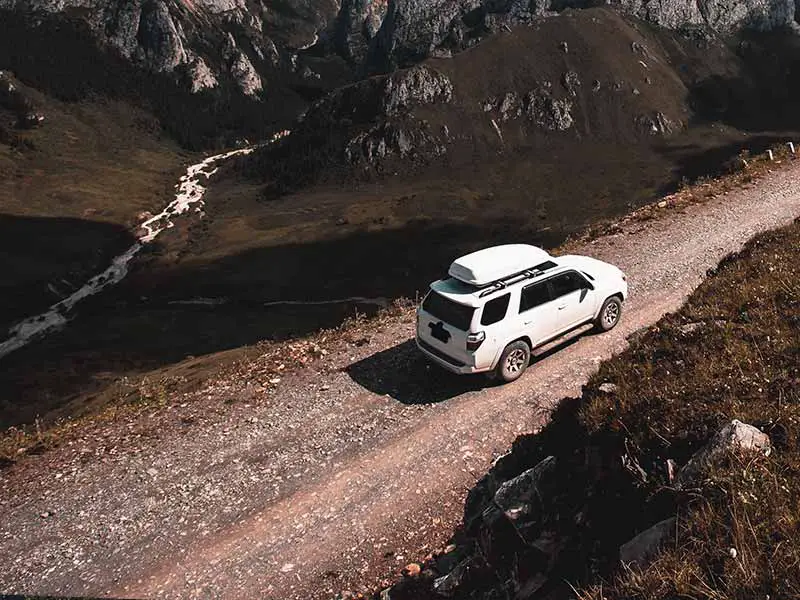
Pros and Cons
MT Tires: The Rugged Explorers
Pros: The Good Stuff
- Unstoppable in Mud: MT tires laugh in the face of muddy paths, helping you get through without getting stuck.
- Rocky Road Warriors: Sharp rocks and rough terrains? MT tires take them on without a worry.
Cons: The Not-So-Good Stuff
- Chatty on the Road: MT tires can be quite noisy when you’re driving on smooth, paved roads.
- Thirsty for Fuel: Your vehicle might sip a bit more gas when it’s wearing MT tires.
- Wear and Tear: On regular roads, MT tires might wear out faster than AT tires.
AT Tires: The Versatile Travelers
Pros: The Good Stuff
- Quiet Companions: AT tires won’t bother you with a lot of noise during your daily drives.
- Fuel-Friendly: They’re not as thirsty as MT tires, helping you save a bit on gas.
- Long-Lasting Friendship: With proper care, AT tires can be your road buddies for a good, long time.
Cons: The Not-So-Good Stuff
- Mud is Tricky: They can handle a bit of mud, but might struggle in the really deep, sticky stuff.
- Rocky Challenges: AT tires can find big, sharp rocks a bit more challenging than MT tires.
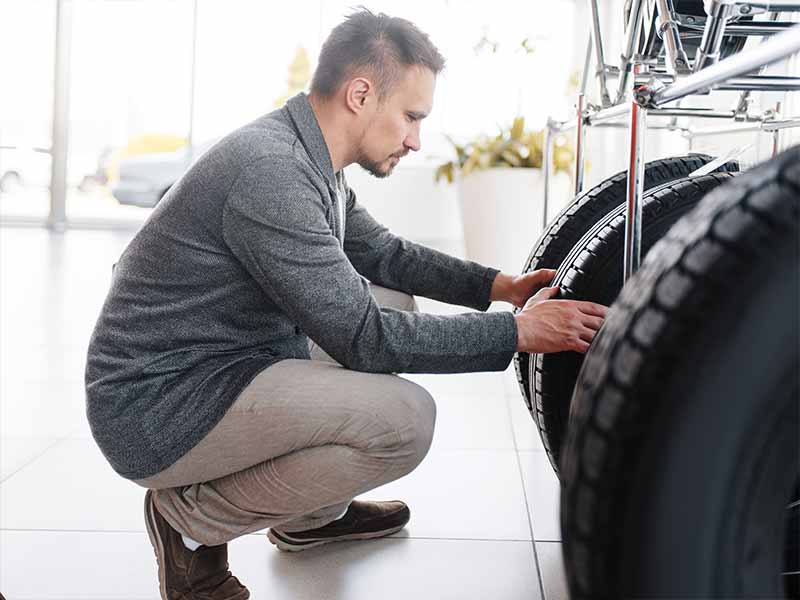
Making the Right Choice
Considerations for Selecting Tires
Choosing tires is like choosing shoes. You wouldn’t wear flip-flops to go hiking, right? Similarly, picking the right tires depends on where you’re going and what you’ll be driving through.
Think About Your Driving Habits
- City Slicker or Country Explorer? If you’re mostly driving in the city, AT tires might be your best bet. If you’re often off-road, MT tires might be the champions for you.
- Weather Watcher: Consider the weather. If you’re often driving in rain or snow, you’ll want tires that can handle that safely.
Consider Your Vehicle
- Heavy Lifter or Light Cruiser? If you’re driving a heavy vehicle or often carry heavy loads, you’ll want tires that can handle that weight.
- Size Matters: Make sure the tires fit your vehicle. Not all tires are the right size for all vehicles.
Expert Recommendations
For the Off-Road Adventurers: MT Tires
- Why? MT tires are built to handle rough and tough terrains like mud and rocks without a worry.
- Best For: 4x4s, SUVs, and trucks that spend a lot of time off-road.
For the Everyday and Sometimes Adventurers: AT Tires
- Why? AT tires can handle daily drives and light off-road adventures without making a lot of noise or using a lot of fuel.
- Best For: Vehicles that spend most of their time on paved roads but like a bit of adventure now and then.
A Few More Tips
- Check Reviews: See what other drivers say about the tires.
- Ask the Experts: Talk to a tire expert about what you need and what you want from your tires.
- Safety First: Always choose tires that make your driving safer, whether you’re off-road or in the city.
Resources
Below are some links you may find helpful when learning about tires
- All-terrain vs. mud-terrain: How to pick the best off-road tires for your adventures – Gear Junkie
- All-terrain vs mud-terrain tires: How do they compare? – RealTruck.com
Final Thoughts
Choosing between MT and AT tires pivots on understanding their distinct advantages and applications. MT tires are your go-to for rigorous off-road terrains, while AT tires offer a balanced, versatile performance for both regular and off-road drives. Your choice will hinge on your driving habits, ensuring not just optimal performance but also safety and comfort on all your journeys.
Good luck and happy motoring.
